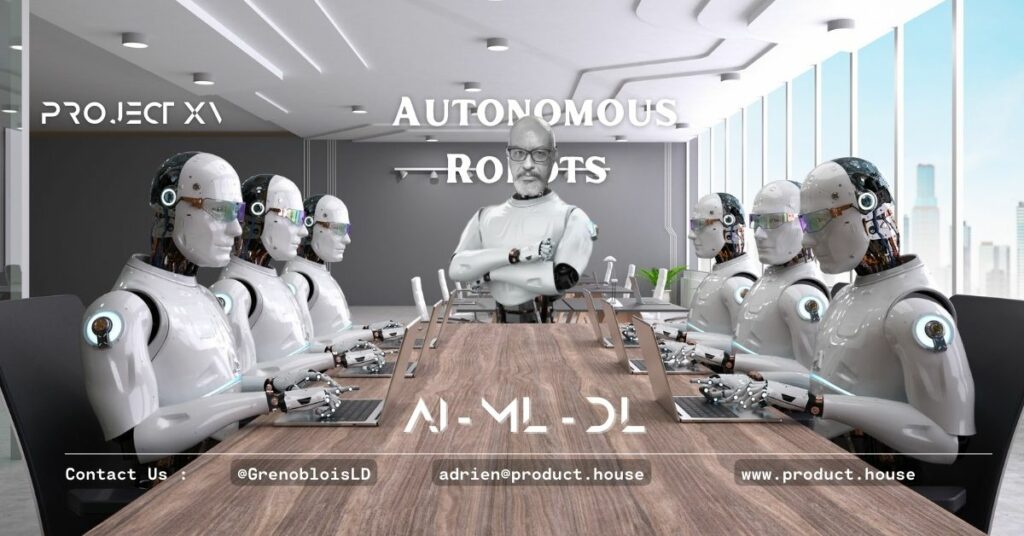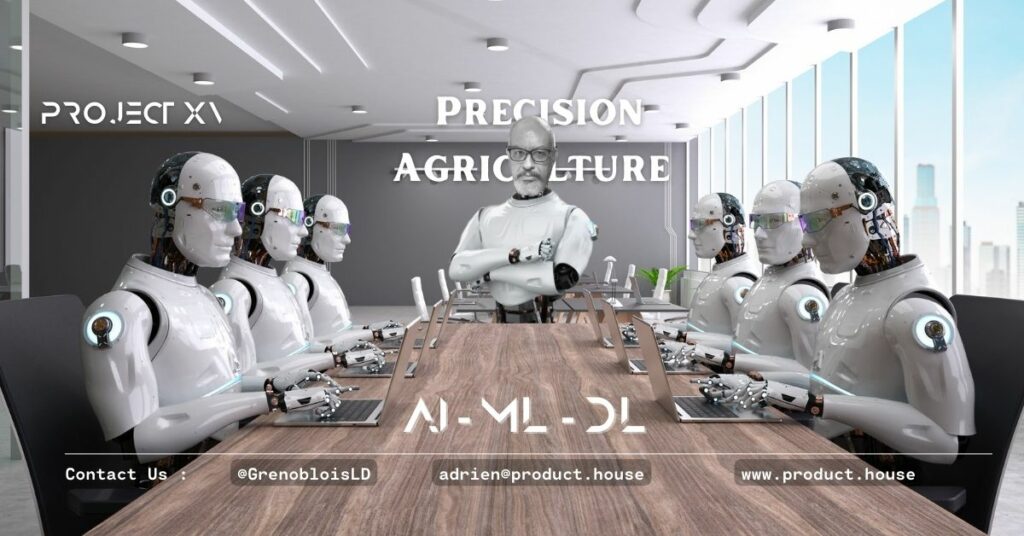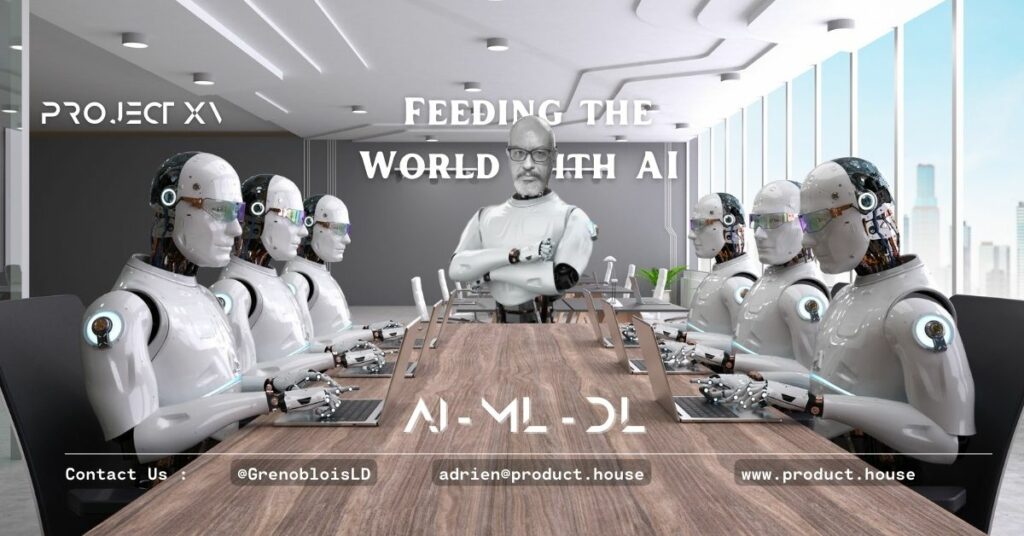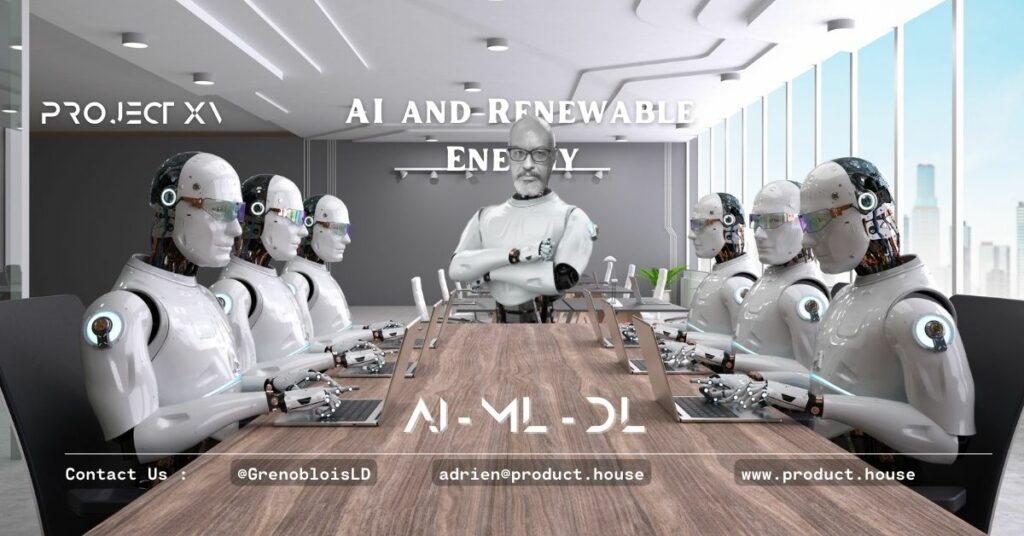Autonomous Robots: How AI Is Changing Farming and Livestock Management

As AI technology advances, we are seeing more and more use of autonomous robots in farming and livestock management. These robots can perform a wide range of tasks, from planting and harvesting crops to monitoring and caring for livestock. By using sensors, cameras, and AI algorithms, these robots can collect data on crop growth, soil quality, and animal health, and provide farmers with valuable insights into how to optimize their operations.
One example of an autonomous robot in farming is the Rowbot, developed by the startup Rowbot Systems. This robot uses AI algorithms to analyze soil samples and determine the optimal amount of fertilizer needed for each section of the field. It can then apply fertilizer to each section of the field with precision, reducing waste and improving crop yields.
In livestock management, autonomous robots can be used to monitor animal health and behavior, as well as to perform tasks such as feeding and cleaning. For example, the robot developed by Dutch startup Connecterra uses AI algorithms to monitor the behavior of dairy cows, providing farmers with insights into their health and well-being.
While autonomous robots have the potential to revolutionize farming and livestock management, there are also challenges associated with their use. These include the cost of implementing these technologies, as well as concerns about data privacy and security. However, as AI technology continues to advance, we can expect to see more and more use of autonomous robots in agriculture, leading to more efficient and sustainable farming practices.
Autonomous robots are just one example of how AI is changing the way we approach farming and livestock management. By using sensors, cameras, and AI algorithms, farmers can collect and analyze data on a wide range of factors, from soil quality to animal health, and use that information to make more informed decisions about their operations.
Some of the key benefits of using autonomous robots in agriculture include increased efficiency, reduced waste, and improved sustainability. These robots can perform tasks more quickly and accurately than humans, and they can do so without the need for breaks or rest periods. This can help farmers save time and money, as well as reduce their environmental impact by optimizing resource usage.
Another advantage of using autonomous robots is that they can collect large amounts of data in real-time, allowing farmers to respond quickly to changing conditions. For example, if a crop is showing signs of stress due to drought, an autonomous robot can detect this early on and alert the farmer, who can then take action to mitigate the damage.
However, there are also challenges associated with using autonomous robots in agriculture. These include the cost of implementing these technologies, as well as concerns about data privacy and security. Additionally, some farmers may be hesitant to adopt these technologies due to concerns about job displacement.
Overall, the use of autonomous robots in agriculture is an exciting development that has the potential to transform the industry. By combining the power of AI with the efficiency of robots, farmers can optimize their operations and achieve greater levels of sustainability and profitability.
Article Reminders:
- Autonomous robots are changing the way we approach farming and livestock management.
- These robots use sensors, cameras, and AI algorithms to collect and analyze data on a wide range of factors, from soil quality to animal health.
- The use of autonomous robots in agriculture has the potential to increase efficiency, reduce waste, and improve sustainability.
- There are also challenges associated with using autonomous robots in agriculture, such as the cost of implementation and concerns about data privacy and security.
FAQs:
- What are autonomous robots in agriculture?
Autonomous robots in agriculture are machines that use sensors, cameras, and AI algorithms to perform tasks in farming and livestock management.
- What are some examples of autonomous robots in agriculture?
Examples of autonomous robots in agriculture include the Rowbot, which can analyze soil samples and apply fertilizer with precision, and the Connecterra robot, which monitors the behavior of dairy cows.
- What are the benefits of using autonomous robots in agriculture?
The benefits of using autonomous robots in agriculture include increased efficiency, reduced waste, and improved sustainability.
- What are the challenges associated with using autonomous robots in agriculture?
Challenges associated with using autonomous robots in agriculture include the cost of implementation and concerns about data privacy and security.
- Can autonomous robots replace human workers in agriculture?
While autonomous robots can perform many tasks in agriculture, it is unlikely that they will completely replace human workers.
- How can autonomous robots help farmers respond to changing conditions?
Autonomous robots can collect large amounts of data in real-time, allowing farmers to respond quickly to changing conditions.
- What are some potential applications of autonomous robots in agriculture?
Potential applications of autonomous robots in agriculture include crop monitoring, soil analysis, and animal health monitoring.
- What are some concerns about the use of autonomous robots in agriculture?
Concerns about the use of autonomous robots in agriculture include job displacement and ethical considerations.
- Are autonomous robots widely used in agriculture?
While the use of autonomous robots in agriculture is growing, they are not yet widely used.
- What is the future of autonomous robots in agriculture?
The future of autonomous robots in agriculture looks promising, with the potential to revolutionize the industry and create more sustainable and efficient farming practices.
Resources:
- Precision Agriculture Research, University of Missouri: This resource is a research center at the University of Missouri that focuses on precision agriculture, including the use of AI and robotics. The center conducts research on topics such as crop modeling, sensor development, and data analysis.
- Robotics and Autonomous Systems Group, University of Cambridge: This resource is a research group at the University of Cambridge that focuses on robotics and autonomous systems. The group conducts research on topics such as robot perception, navigation, and control, and has worked on projects related to precision agriculture.
- Autonomous Systems Laboratory, University of Illinois at Urbana-Champaign: This resource is a research group at the University of Illinois at Urbana-Champaign that focuses on autonomous systems, including robots and drones. The lab conducts research on topics such as robot perception, planning, and control, and has worked on projects related to precision agriculture and crop monitoring.
Books :
- “Robotics in Agriculture and Forestry” by Qin Zhang: This book provides an overview of robotics and AI in agriculture and forestry, covering topics such as sensing and perception, decision-making, and actuation.
- “Precision Agriculture: Technology and Economic Perspectives” by N. Kumar and M. Sharma: This book explores the economic aspects of precision agriculture, including the use of AI and robotics to optimize crop yields and reduce waste.
- “Agriculture in the Age of AI” by Amit Sankhala and Dipanjan Mukherjee: This book examines the ways in which AI is transforming agriculture, including precision agriculture, crop monitoring, and supply chain management.
Experts:
- Dr. John Stafford is an Associate Professor at the University of Missouri. He is a specialist in precision agriculture and focuses on the development of sensing and data analytics tools for crop management. His research includes the use of machine learning and AI for crop yield prediction and optimization.
- Dr. Emma Stewart is the Head of Sustainability Solutions at Autodesk, a technology company that specializes in software for engineering, construction, and manufacturing. She is an expert in sustainable design and has worked extensively on the use of AI and machine learning to optimize energy efficiency and reduce waste.
- Dr. Nikolaus Correll is an Associate Professor at the University of Colorado Boulder. His research focuses on robotics and the development of autonomous systems, including robots that can work in agriculture and other industries. He has developed robots that can operate in challenging environments and has worked on projects related to precision agriculture.
Examples of Use:
- Rowbot Systems is a company that develops autonomous robots for precision agriculture. These robots can navigate between crop rows and apply fertilizers and other inputs precisely where they are needed, reducing waste and improving crop yields.
- Connecterra is a company that uses AI to monitor and manage livestock. Their platform, called “Ida,” uses sensors and machine learning algorithms to monitor individual animals and provide real-time information on their health and behavior. This can help farmers optimize their management practices and improve animal welfare.
- Blue River Technology is a company that develops robotic weed control systems for agriculture. Their “See & Spray” technology uses cameras and machine learning algorithms to identify weeds in real-time and apply herbicides precisely where they are needed. This can reduce the use of herbicides and improve the sustainability of farming practices.
Glossary:
- Autonomous Robots: Machines that use sensors, cameras, and AI algorithms to perform tasks in farming and livestock management.
- Precision Agriculture: The use of technology, including AI and robotics, to optimize crop yields and reduce waste.
- AI Algorithms: Mathematical algorithms that use artificial intelligence to learn from data and make predictions.
- Sensors: Devices that measure physical properties, such as temperature or humidity, and transmit that information to a computer or other device.
- Cameras: Devices that capture visual information, such as images or video, and transmit that information to a computer or other device.
- Sustainability: The ability to meet the needs of the present without compromising the ability of future generations to meet their own needs.
- Data Privacy: The protection of personal or sensitive information from unauthorized access or use.
- Data Security: The protection of data from unauthorized access, use, disclosure, or destruction.
- Job Displacement: The loss of jobs due to automation or other technological advances.
Quiz Questions:
- What are autonomous robots in agriculture?
- What are some examples of autonomous robots in agriculture?
- What are the benefits of using autonomous robots in agriculture?
- What are the challenges associated with using autonomous robots in agriculture?
- Can autonomous robots replace human workers in agriculture?
- How can autonomous robots help farmers respond to changing conditions?
- What are some potential applications of autonomous robots in agriculture?
- What are some concerns about the use of autonomous robots in agriculture?
- Are autonomous robots widely used in agriculture?
- What is the future of autonomous robots in agriculture?






